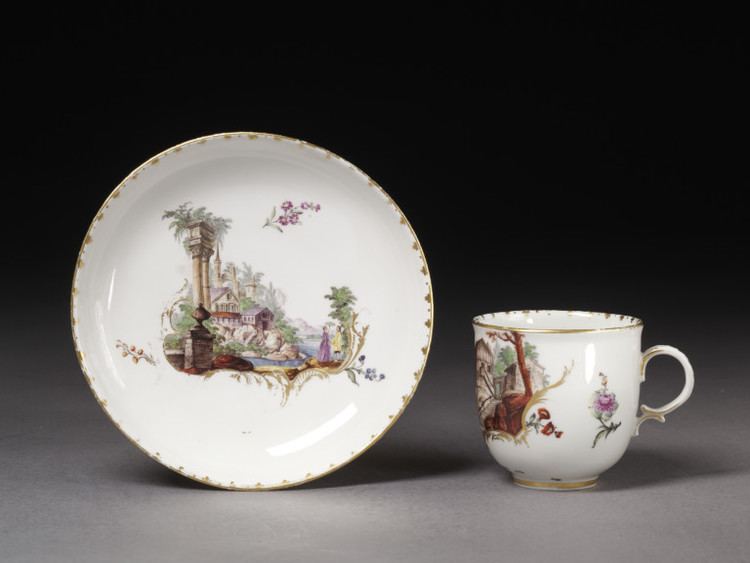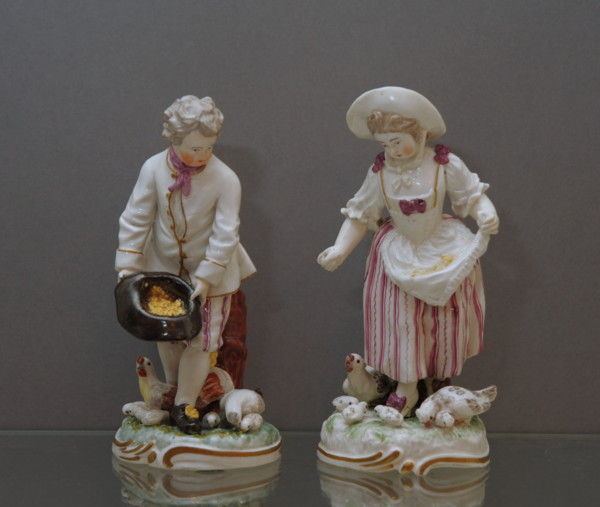 | ||
The Frankenthal Porcelain Factory (German: Porzellanmanufaktur Frankenthal) was one of the greatest porcelain manufacturers of Germany and operated in Frankenthal in the Rhineland-Palatinate between 1755 and 1799. From the start they made hard-paste porcelain, and produced both figurines and dishware of very high quality, somewhat reflecting in style the French origin of the business, especially in their floral painting. Initially they were a private business, but from 1761 were owned by the local ruler, like most German porcelain factories of the period.

History

The porcelain factory in Frankenthal was established in 1755 by the Hannong family, who had previously manufactured porcelain, as well as Strasbourg faience, in Strasbourg until Louis XVI established a state monopoly on porcelain in favour of the Sèvres factory and closed down all others. Karl Hannong transferred his business to an empty barracks in Frankenthal and staffed it with his Strasbourg workforce, under a privilege from the local ruler Elector Carl Theodor of Bavaria, who visited the factory himself in the following year, once production was well under way. In 1757 additional craftsmen were hired from Meissen porcelain and in 1759 Hannong was able to open a shop in Strasbourg.

However, in 1760 Karl Hannong died and the business became the property of his two sons Joseph Adam Hannong and Peter Anton Hannong, who fell out over the "arcanum" (the formula of the paste). Their disagreements had a damaging effect on the business and by 1761 they had borrowed so much from the Elector that it was impossible for them to repay it. In 1762 therefore the Elector bought the factory from the Hannongs for 40,804 guilders, plus another 10,00 for the arcanum, and installed his own officials to manage it.

Frankenthal Porcelain was always hard-paste, as Hannong senior had been in partnership in Strasbourg with an ex-employee of the Meissen factory. It is said that one of his sons sold the secret to Sèvres, although they were unable to obtain the right raw materials for some time.
The years from 1762 to 1770 were extraordinarily successful: the products achieved high quality and established the factory's reputation. They retained some of the French style of Strasbourg. From 1770 all items were marked with a date mark. From 1774 the paste was made with local china clay, generally mixed with "Passau earth" (Passauer Erde). By 1776 the Frankenthal porcelain factory had shops in Aachen, Basle, Frankfurt am Main, Livorno, Mainz, Munich and Nancy.
The Napoleonic Wars brought an end to the business. Frankenthal was occupied by the French, who closed the porcelain factory down in 1799.
The Frankenthal factory was in operation for only 44 years (run for 7 years by the Hannongs, and for 37 by the electoral administration) and is thus the shortest-lived of the major German porcelain manufacturers. Collections of Frankenthal porcelain may be seen, among other places, in the Reiss Engelhorn Museum in Mannheim, the Kurpfälzisches Museum in Heidelberg, the Historisches Museum der Pfalz in Speyer and the Bavarian National Museum in Munich. Works of the brothers Paul and Johann Hannong are displayed in the Musée des Arts décoratifs, Strasbourg and in the Musée du pain d'épice in Gertwiller.
